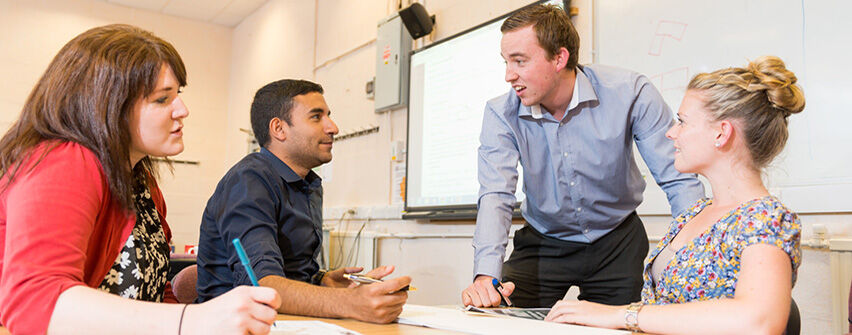This blog introduces the reader to my beloved, relatively unknown specialist arena of conductive education (CE). Through this platform I hope to raise awareness of this transformative pedagogical approach. At present CE is on the periphery in the fields of both education and special educational needs and disabilities. I fear this is due to misconceptions and a lack of understanding – hence my desire to offer clarity. My aim is to demonstrate how thinking with the ‘posts’ can aid the comprehension of CE.
Inspired by Deleuze and Guattari (2004:27), I would like to start in the middle “where things pick up speed”.
The ‘fairy-tale bit’
If this story happened to be a hit Hollywood romantic comedy, our heroine – CE, would be a third or fourth generation immigrant, with a foreign sounding name (Pető), in the UK from a not so far away post-communist country, Hungary. CE would appear uncool, unfashionable, maybe a little quirky, and waiting for a makeover. A quick wardrobe change and an eyebrow tidy later, CE would be unrecognisable to the eye yet still holding onto its same, powerful core values and underlying philosophy transforming the lives of those it meets!
The common saying: beauty is in the eye of the beholder, seems fitting to move us away from this unrealistic movie fantasy. Families who experience conductive education recognise its qualities; people often say that CE gives them hope. As a professional of CE – a conductor – I know the narrative is not about hope. CE actually facilitates the creation of an altered perception of the self – a realistic picture of what is possible to be achieved by a human. As such CE questions societal views on potential and challenges ‘social norms’, which are often in line with the medical model of disability. The medical or deficit model views disability/difference as a tragedy, consequently it focuses on the ‘problem’ and deems it negatively (Cameron & Lingwood, 2020; Bartlett & Burton, 2016; Swain & French, 2000).
The dark shadows in the plot
You might be shouting at your screen quizzically: if CE is that great, then why is it not more internationally recognised? As always… it is complicated.
Firstly, I will not speak for the profession as a whole, but I know that I am perfectly guilty of preferring to spend my time practicing CE rather than trying to explain it to the world outside of my bubble. You reading this, however, is proof that I am trying to change my ways. To quote one of my role models: If you are part of the problem, then you must be part of the solution. So here I am, for the first time, trying to write for a wider audience! My every fibre combating insecurities and fighting against the dreaded ‘imposter syndrome’ – have I got a loud enough critical voice, which is worthy of being heard and listened to?
Secondly, due to its layers and complexities, it is very challenging to pin down or explain CE in a brief and concise way to actually do the approach justice.
Thirdly, CE does not fit into ‘our’ neo-liberal system of education. It is process oriented rather than outcomes, evidence and performance focused (Ball, 2017; Archer, 2008). CE is time consuming, labour intensive and does not offer a quick fix – it is not about choosing how best to invest time and resources for the highest and greatest return (Ball, 2017). CE is not concerned with ‘productivity’. On the contrary, it is about creating opportunities and improving experiences for those deemed as ‘adversely affecting the education of others’ (Abbot et al, 2013). Therefore, it is clear to see why CE is not popularised – it brings the current system’s views/values into question.
Getting to know our heroine/hero
CE is a structured and layered pedagogical system where an active approach is applied to enable people with damage to their central nervous system to achieve and succeed in life (PCA, 2009; Hári et al, 1991). CE promotes the educational and the social inclusion of those living with a disability, empowering the individual and their families (Emerson & Holroyd, 2019). This resonates with the Special Educational Needs and Disabilities Code of Practice, which has a strong focus on improving outcomes for children, young people and their families (DfE, 2015). CE is holistic – putting the learner in the centre of the environment: increasing motivated participation from those, who are traditionally viewed as passive and unable (Russell, 1994). This is resonant with a ‘strength-based approach’ in social work – putting individuals at the core, strengthening relationships with the wider community, and building social capital (DoH, 2017). As a brief aside, although social work is not in the field of education, their strength-based approach is a useful parallel to use to demonstrate yet another layer to CE. CE fosters the acquisition of the general ability to adapt and to problem-solve, as well as develop self-respect and confidence in one’s own abilities (Russell, 1994; Hári & Ákos, 1988).
By its essence, it is active and is concerned with learning (Maguire & Sutton, 2004). As an active pedagogical approach to overcoming difficulties, CE makes learning accessible to all (Read, 1990) enabling people to achieve (PCA, 2009). Conductors have a strong belief in individuals’ potential to learn regardless of their age, diagnosed condition or abilities (Hári, 1997, 2014; Medveczky, 2006). We have high expectations of our learners and through scaffolding and differentiation, facilitate people to experience success (Hári, 2014; Brown, 2006; Cotton, 1994). Human beings thrive if someone shows belief in their abilities – the Pygmallion or Teacher Expectancy Effect, confirm that teachers’ expectations directly and positively impact on their students’ level of performance (Szumski & Karwowski, 2019; Howard et al, 2015). CE challenges negative perceptions on what is possible for/by people with impairments. In a sense appraising the affirmation model – asserting positive identities and opposing the ‘tragedy view’ of disability (Cameron & Lingwood, 2020; Swain & French, 2000).
It is possible that after this whole section on CE, you are still wondering how it actually manifests in practice. I did warn you about the complexities of this transformative approach! As with everything ‘different’ from the norm, meaning-making can take time.
Meeting CE’s perfect match
The main focus of my doctoral research is to create a theoretical framework for CE to aid its conceptualisation. Traditional research methodologies have not been successful in unpacking CE. My initial meeting with ‘posts’ thinking was pure seduction! It is possible that I am drawn to post-qualitative approaches as they are marginalised just like CE. A post-qualitative inquiry welcomes my resistance against the rigid, conventional structure of researching. I do not wish to be restricted by pre-systematised methods, as I fear they might act as a barrier in what could be thought/written/found (St Pierre, 2020). Lather (2013: 642) describes ‘posts’ thinking as the one that “breaks methodological routine… in order to disrupt…”. My intention is to carry out a theoretical exploration. Therefore, I do not want the restraints of a methodology to close down my thinking. A post-qualitative inquiry has no pre-existing research design dictating what to do (St Pierre, 2020), allowing the inquiry to be driven by theory and curiosity. As such, each post-qualitative inquiry is unique (St Pierre, 2019). This resonates with CE, as the pedagogic benefits to its learners are as varied as the people CE engages. CE is difficult to explain as it is intangible, crossing professional boundaries, which conventional academia is not flexible enough to accommodate (Forrai, 2020). Post-qualitative inquiry could offer a valuable way of viewing the complex and non-linear nature of CE (Lambert, 2021). I will be thinking with Barad’s entanglements, intra-actions and using diffractive analysis. Diffractive analysis could be applied as the perfect tool to prevent me from being complacent in the way that I think and treat research. This way, analysing ‘data’ is not about producing sameness or interpretation, the focus shifts to discovering a reality, which already exists but had not been able to show itself yet(Mazzei, 2014; Taguchi, 2012; Barad, 2007). Undoubtedly the perfect match to grappling with the ‘stuckness’ around CE.





